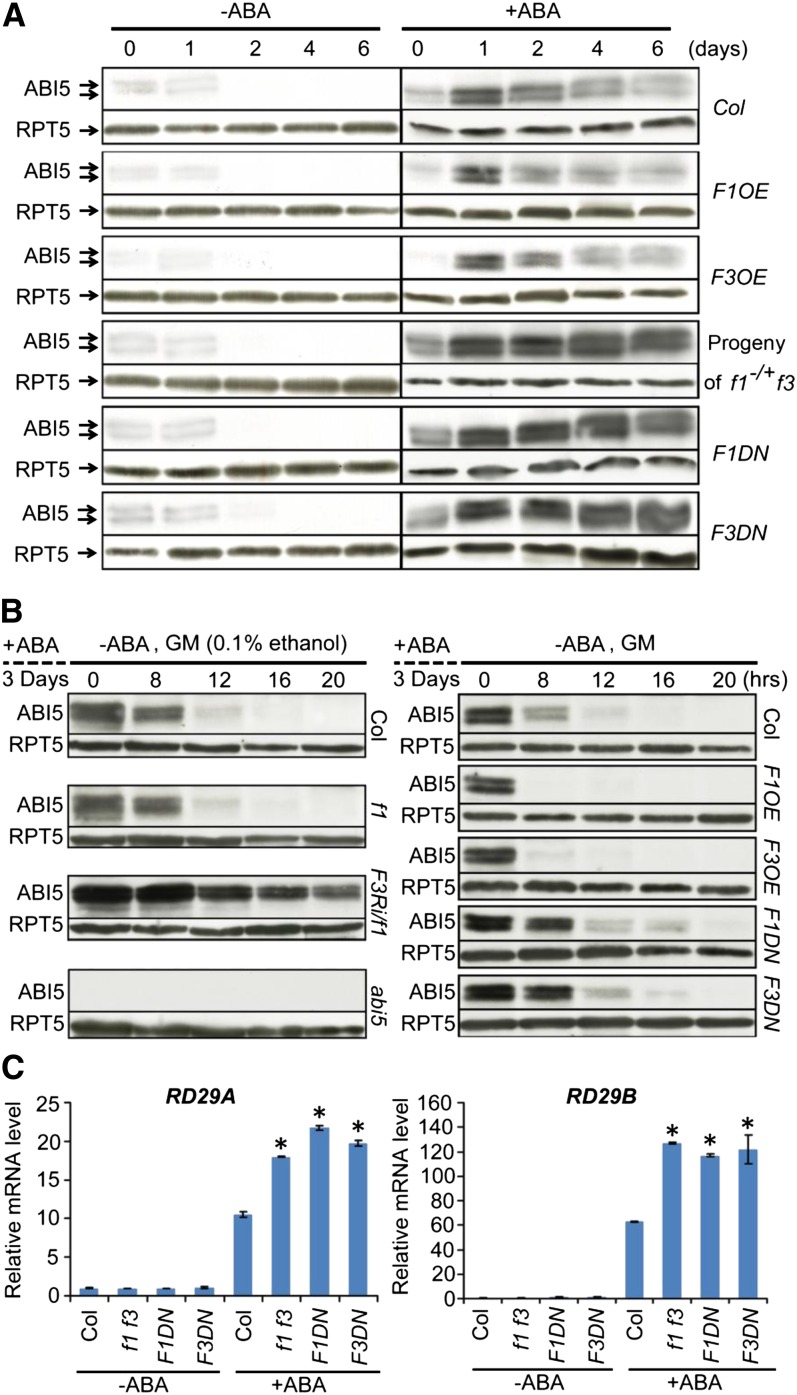Figure 5.
Role of FyPP1 and FyPP3 in the Regulation of ABI5 Protein Stability.
(A) Immunoblot assays showing that more ABI5 protein accumulated in seeds of self-pollinated f1−/+ f3, F1DN, and F3DN lines but less accumulated in F1OE and F3OE seeds compared with Col seeds treated with ABA (1 μM) for various durations (0, 1, 2, 4, and 6 d). A total of 100 μg protein was loaded for each lane. All immunoblot assays were performed side-by-side under identical conditions. Arrows indicate the ABI5 protein bands. RPT5 was used as a loading control.
(B) Immunoblot assays showing that after ABA removal, ABI5 protein was more stable in F3Ri/f1, F1DN, and F3DN lines but more rapidly degraded in F1OE and F3OE seeds compared with Col seeds. The seeds were treated with ABA (5 μM) in white light for 3 d and then harvested at different time points after removal of the ABA. The medium used for each line is indicated on the top of each panel. abi5-1 mutant seeds were used as a negative control in the experiment. A total of 100 μg protein was loaded for each lane. All immunoblot assays were performed side-by-side under identical conditions. RPT5 was used as a loading control.
(C) Quantitative RT-PCR assay showing that the expression of RD29A and RD29B was hyperinduced in f1 f3, F1DN, and F3DN seedlings treated with ABA compared with ABA-treated Col. Five-day-old seedlings were incubated in 1× Murashige and Skoog liquid medium with ABA (100 μM) or control solvent (DMSO) for 1.5 h before harvest. Values are means ± sd; n = 3. Asterisks indicate the levels of statistical significance as determined by Student’s t test: *P < 0.01 versus Col.
[See online article for color version of this figure.]

